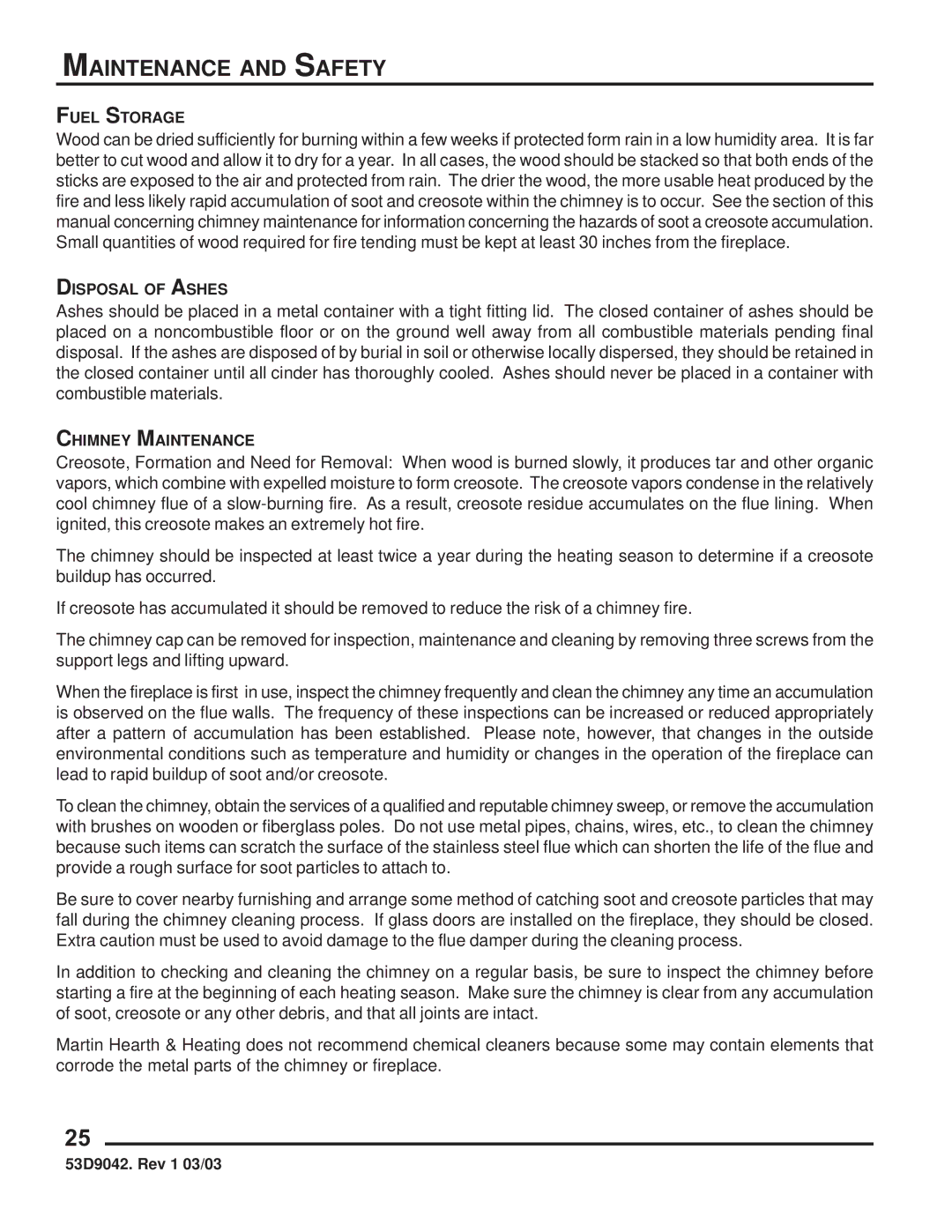53D9042 specifications
The Martin Fireplaces 53D9042 is a stunning addition to any home, blending advanced technology with timeless design. This model is built to offer both aesthetic appeal and functional warmth, making it an ideal choice for homeowners seeking to enhance their living spaces.One of the standout features of the Martin Fireplaces 53D9042 is its efficient heating capabilities. With a powerful output, this fireplace can heat large areas effectively, ensuring that your home remains comfortable even during the coldest months. The unit is designed with a high-efficiency combustion system that maximizes fuel usage, minimizing heat loss and helping to reduce energy bills.
In terms of design, the 53D9042 boasts a sleek, contemporary look that fits seamlessly into modern and traditional homes alike. The glass front enhances the visual appeal, providing a mesmerizing view of the flames while allowing for easy monitoring of the fire. The clean lines and polished finish make it a stunning focal point for any room.
The advanced technology incorporated into the Martin Fireplaces 53D9042 is another notable aspect. This model is equipped with an electronic ignition system, which allows for easy start-up and convenience. The adjustable flames can be tailored to create the perfect ambiance, while the remote control functionality provides added comfort, allowing users to control the fire from across the room.
Safety features are also prioritized in the design of the 53D9042. The fireplace incorporates a safety shut-off mechanism that activates if the unit overheats, providing peace of mind to homeowners, especially those with children or pets. The air intake system is designed to ensure proper ventilation, preventing the buildup of harmful gases within the home.
Overall, the Martin Fireplaces 53D9042 represents a perfect synergy of style, technology, and performance. Its blend of functionality and design makes it a superb choice for anyone looking to invest in a high-quality heating solution. With its efficient heating output, innovative technologies, and elegant appearance, the 53D9042 is sure to enhance both the warmth and ambiance of any living space, making it a worthwhile investment for the years to come.

